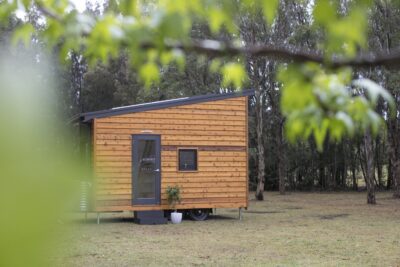How Tiny Homes Improve Your Environmental Impact
How Tiny Homes Improve Your Environmental Impact
Tiny houses in the UK are rapidly gaining popularity for many reasons. One of the most common ones is its incredible impact on the environment, when compared to a traditional house. Everybody is becoming more aware of the way they can decrease their carbon footprint and live more sustainably. Here’s how a tiny home can make a huge difference.
Lessen the impact of your build
The building of a traditional house has a significant impact on the environment. On average, a house will require around seven truckloads of lumber, bricks and other materials to build. A tiny house needs just half a truckload and is built offsite in a factory, therefore reducing disruption on-site! With the need for fewer materials, there’s the possibility to spend the same budget by investing in materials that make even less environmental impact, such as local wood and sustainable energy sources.
Opens the door for more environmental steps
Any tiny home is a great environmental step, however, when you’re building your perfect space it gives an opportunity to improve your carbon footprint even more. When building from scratch, you’re able to include things like solar panels, rainwater collection and other eco-focused features without having to fit them retroactively.
Reduce your energy consumption
The average UK home is 75 m2, whereas the average tiny home here is a 4.8m tiny home. The majority of a home’s environmental impact comes from energy consumption. In a big house, it takes a lot to keep the lights on and the rooms warm. Have a smaller property? There’s less energy needed to maintain the same levels of comfort you had before, plus fewer electronics than you’d have in a traditional home.
Lower “Life Cycle” Cost
In a traditional house, you are likely to be redecorating every few years. Over the course of a lifetime, there might be several new bathrooms, lots of new coats of paint, new carpets and changes of furniture. In a tiny home, you’re able to redecorate more quickly, with smaller expense and less consumption.
Fewer Possessions, Less Waste
Consumption is one of the biggest ways that the average person impacts the environment. In a traditional home, there is likely to be furniture that is there simply to fill the space and items that serve little purpose. In a tiny home, everything you own has a place and a purpose, lessening the impact on the environment.
In a study by Maria Saxton, which assessed the environmental impact of 80 tiny home owners as they moved from a traditional to a tiny home, it was found that moving to a tiny house reduced their ecological footprint by 45%. We’re looking forward to seeing the impact in the UK, where the tiny house movement is gaining traction!
If you’re interested in learning more about how a tiny house can help improve your environmental impact, or in starting your journey with experienced tiny home builders in the UK, speak to The Qube. We’ve helped many people just like you create the tiny home that fits their lifestyle perfectly. Give us a call today to learn more.


